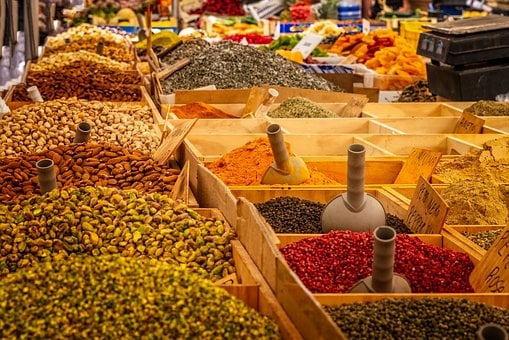According to the Peruvian Minister of Foreign Trade, Édgar Vásquez, national Peruvian shipments will reach USD$52,000 million this year, surpassing the previous record number of US$47,700 million last year. Even though total exports broke a record in 2018 (with a 7.5% increase), they were not able to meet the initially established goal. Still, the Ministry of Foreign Trade (Mincetur) is optimistic about the results and the promising forecasts of national shipments in 2019.
At the end of 2018, non-traditional shipments totalled USD$13,200 million, which represented an increase of 12.6%. This indicates that shipments of 829 products broke record numbers. Products such as grapes, avocados, blueberries, squid, tires, radial accumulators, iron bars, among others, reached a historic record in 2018.
International Trade Peru – Export Trends 2019

The bright future of Peruvian exports reveals promising export figures, exceeding USD$52,000 million in 2019. Of this total, non-traditional shipments will reach USD$14,500 million (9.84% growth) this year. Despite a lower growth rate compared to 2018, a new record will absolutely be set. Vásquez explained that as of 2018, the non-traditional sectors will have homogeneous behaviour. That is to say, most of them will manage to continue to grow. More specifically, significant sectors worth mentioning are agro-industry, fishery, and minerals (iron steel). However, there are also positive prospects for the exports of jewellery, plastics, and non-metallic mining.
Governmental support for the export sector encourages growth rates to hold. In the upcoming days, Peru will ratify the trade agreement signed with Australia. As recalled, one year ago, this commercial agreement was signed in the Australian capital of Canberra.
Next month will start the deepening of trade agreements with Mercosur, beginning with Argentina. Next month will also mark the fourth round of negotiations with India. Peru will also seek to maintain relationships with the United Kingdom, after their departure from the European Union. Along with decreasing taxes and tariffs, this will speed up trade patterns.
In the same vein, and as part of the announcement of the ´X Expoalimentaria 2018´, the president of the Association of Exporters (ADEX) mentioned that the Peruvian domestic agricultural market is small with respect to its productive potential, which is why exportation is the most important development path for farmers and fishermen. Therefore, the Law of Agrarian Promotion will soon be renewed and extended to aquaculture, so that it intensifies investment and increases exports, generating more welfare for Peruvians.
Trade Opportunities
Superfoods
Peru is on its way to becoming one of the ten most important fruit exporters in the world. According to the Ministry of Foreign Affairs, the sector is expected to continue growing at a rate of 4.0% for 2019. Major products include avocados, grapes, coffee, poultry, fresh milk, and palm oil. Peru’s immense biodiversity allows for the farming of many interesting endemic agricultural crops for the international market. Therefore, Peruvian fruits and vegetables are gaining ground in international markets, with exports also growing at a solid pace.
Business-wise, superfoods continue to advance worldwide opportunities, as the launching of new products soared by 202% in 2011-2015.
According to the Promotion Commission of Peru for Exports and Tourism (Promperú), commercial commitments of superfoods have exceeded approximately USD$42.2 million in 2018. The demand for all kinds of superfoods is growing, which makes Peru – with a rich set of superfoods – an extremely interesting business opportunity. Among others, trade opportunities are available in the following superfoods:
- Quinoa: This popular food has become globally thanks to its healthy image. Peru found themselves as the main producer of this crop. Europe is already reaping the benefits of the superfood, but the export of Peruvian quinoa to China is likely to do the same. A sanitary agreement for the entry of the Andean superfood into China will be signed in the first quarter of 2019, to fulfil product requirements. Obviously, this will encourage exports to new markets, including other Asian markets.
- Camu Camu: This small oval fruit is the baby of one of the most important natural resources on the planet. The camu camu tree grows naturally in the Peruvian Amazon.
- Blueberries: the blueberry is mainly available in the cold regions of the northern hemisphere, although there are also tropical species. Peru is in the top 5 among the world’s largest exporters of blueberries. More specifically, Peru is the second supplier for this market to China.
- Anchovy: The Peruvian anchovy yields greater catches than any other fish species in the world and is the Peruvian fishing industry´s main export.
Peruvian cacao
At the Expo Amazonica 2018, Peruvian rainforest products attracted international buyers. Buyers and trade specialists from the United States, Europe, and Asia and more than 60 Peruvian exporters joined the event. This successful event revealed the specialism of Peruvian cacao. For instance, German importers regard Peruvian cacao as one of the best in the world.

The best cacao is produced in seven Natural Protected Areas (ANPs), meeting high-quality standards and positioning the Inca country as the world’s second-major organic cacao producer. Cacao exports will surpass USD$500 million by 2021, reported by Peru’s Agricultural and Irrigation Minister Jose Manual Hernandez. Also, value can be added to the natural product by turning it into chocolate. This is why the cacao sector is a perfect fit for foreign investors to capitalize on its potential.
Alpaca Fiber
The textile sector is mainly known by its fine hair product Alpaca. This sector experienced a 28.6% increase in 2018. Peru is the world’s main producer and exporter of alpaca fibre, accounting for more than 80% of the whole output. In this regard, the Arequipa region is the top exporting area. Of the total production, more than 60% is intended for the international market.
The Mining Sector
The mining sector is an outstanding sector and is of great importance to the Peruvian economy. Mining investments will total USD$6.1 billion this year thanks to the commencement of large projects and resource allocation for operations’ expansion and modernization. In 2018, the amount of mining investment went beyond expectations of the Central Reserve Bank (BCR). It increased by 26% compared to the estimated 19% of the BCR. There is a portfolio of 48 pending projects to be executed, which exceed USD$59 billion. The extraction of the Peruvian mineral supply creates new trade opportunities for mining companies.
Nowadays, Peru is among the six countries with the highest mineral sources in the world. Peru ranks second worldwide in resources like silver, copper, and zinc. Although Peru has large deposits of a wide set of minerals, only a small percentage is being exploited.
- Lithium: a newly discovered lithium mine is expected to start operating in 2020, and an initial investment of USD$800 million will be required by investors interested in the project. The future of electric cars will stimulate the production of the electric industry. This will create a bulk of extraction opportunities.
Need Further Information?
Peru showed stunning export figures for 2018. Furthermore, the years 2019 and beyond present promising trade opportunities for foreign companies in a range of sectors, small and large.
Biz Latin Hub has a local team of professionals that can provide tailored support regarding trade opportunities and legal requirements in Peru. Don’t hesitate to get in contact today here. We are ready when you are.





